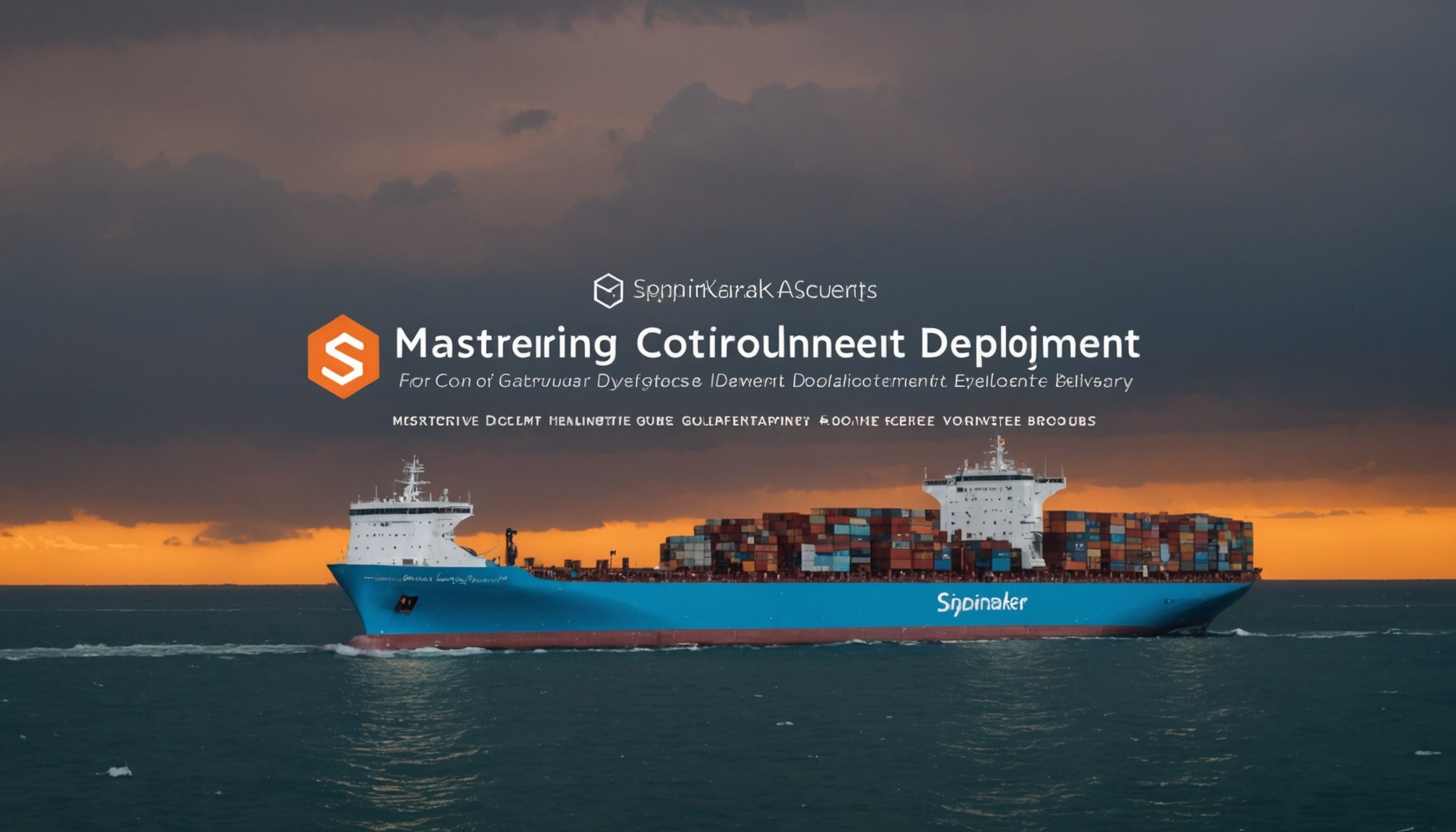Understanding Continuous Deployment and Microservices
In the fast-paced world of software development, Continuous Deployment (CD) has become a cornerstone, allowing for automatic updates to be released into production once they pass predefined tests. This approach enhances the agility and flexibility of the software delivery process, reducing the time-to-market and enabling faster user feedback loops.
The Microservices architecture complements continuous deployment by breaking down applications into smaller, independent units that can be developed, deployed, and scaled independently. This modular approach provides numerous benefits, including improved fault isolation, simplified debugging, and the ability to use diverse technologies for each service.
Have you seen this : Comprehensive Handbook for Streamlined MongoDB Backup and Restore on AWS: Achieving Effortless Data Security
DevOps practices play a pivotal role in promoting continuous deployment for microservices. By fostering a culture of collaboration between development and operations teams, DevOps ensures efficient workflow and deployment processes. Continuous testing, integration, and monitoring are integral to maintaining the quality and performance of microservices in a continuous deployment framework.
Together, continuous deployment and microservices architecture provide a robust foundation for modern software development, offering efficiency, reliability, and scalability. These methodologies allow developers to innovate rapidly while ensuring continuous delivery of value to users. Embracing these approaches can empower organisations to stay competitive in today’s dynamic technological landscape.
Topic to read : Mastering Single Sign-On: The Definitive Guide to Securing Access with Keycloak
Introduction to Spinnaker
Spinnaker is a sophisticated continuous delivery platform designed to enhance deployment processes, particularly within multi-cloud environments. It seamlessly integrates with various CI/CD tools, streamlining the path from code commit to production release. Spinnaker’s robust framework is tailored to support complex deployment strategies, ensuring organizations maximize operational efficiency and flexibility.
History and evolution of Spinnaker
The inception of Spinnaker can be traced back to its development at Netflix to address internal deployment challenges. Over time, it has evolved into a widely-adopted open-source solution, boasting contributions from a diverse global community. As technological landscapes shifted towards multi-cloud deployments, Spinnaker expanded its functionalities to cater to this demand, supporting major cloud providers like AWS, Google Cloud, and Azure. Its evolution reflects a commitment to providing comprehensive support for modern deployment needs.
Core functionalities of Spinnaker
Spinnaker’s core lies in its comprehensive deployment management features. It offers capabilities for multi-cloud deployment, allowing users to deploy applications across different cloud providers from a single platform. Key functionalities include support for automated canary analysis, intuitive pipeline management, and integration with existing CI/CD frameworks. This ensures streamlined, efficient, and reliable deployments, making Spinnaker an invaluable asset for organizations looking to optimize their software delivery pipelines.
Setting Up Spinnaker for Your Environment
When setting up Spinnaker, particular attention needs to be given to prerequisites such as requirements and dependencies essential for seamless installation. Specifically, prepare your environment by ensuring adequate infrastructure setup that supports the installation process. This typically includes cloud provider accounts and reliable storage services. Clear dependency management lays the foundation for a successful setup.
Following this, configuring Spinnaker for various cloud providers is crucial. Given Spinnaker’s robust support for multi-cloud deployment, configurations can be tailored for providers like AWS, Google Cloud, and Azure. Begin by installing necessary plugins specific to your chosen providers and align these with organisational deployment goals. Customising pipelines for each provider maximises efficiency across deployment platforms.
Adhering to best practices will further aid in ensuring smooth deployment flows. These include optimising storage and relief management, securing API integrations, and regularly updating Spinnaker versions to the latest releases. Additionally, implementing systematic infrastructure monitoring ensures timely identification and resolution of potential issues. By closely following these practices, organisations can streamline their continuous deployment process, achieving operational success and global scalability.
Implementing Continuous Deployment with Spinnaker
Implementing continuous deployment with Spinnaker involves crafting robust deployment pipelines tailored to your software development needs. Spinnaker pipelines provide a structured workflow to automate and manage application deployment across diverse platforms. A well-constructed pipeline ensures efficient code verification, integration, and seamless delivery, enhancing the overall deployment strategy.
Creating effective deployment pipelines in Spinnaker necessitates understanding the unique requirements of your application and environment. Start by defining stages in the pipeline, such as build, verification, and production, ensuring each stage progresses smoothly to achieve optimal deployment outcomes.
Strategies like canary and blue/green deployments are pivotal in minimizing risks during deployments. Canary releases allow incremental exposure of updates to a subset of users, ensuring stability by identifying potential issues early. Blue/green deployments facilitate quick rollback options by maintaining parallel production environments, ensuring minimal downtime.
Implementing rollback strategies is crucial for safe deployments. Rollbacks enable reverting to a stable version if issues arise post-deployment, safeguarding against disruptions. Spinnaker supports these strategies by automating rollback processes and ensuring swift response to deployment challenges. Embrace these methods to maximize the benefits of continuous deployment with Spinnaker.
Best Practices for Continuous Deployment
Continuous Deployment is a vital aspect of modern software delivery, ensuring swift release cycles with reliability. Implementing best practices is crucial to maximise its benefits.
Automated testing forms the backbone of a robust deployment pipeline. By integrating automated tests at every stage, potential issues can be detected early, reducing risks of failures in live environments. These tests ensure code quality and system integration remain consistent.
Performance monitoring is another indispensable element post-deployment. Tracking system metrics and user interactions provide insights into application behaviour, enabling teams to pinpoint bottlenecks and make necessary adjustments. This vigilance enhances the overall user experience and system stability.
Security should be a top priority in the deployment process. Implementing measures like continuous security checks and vulnerability assessments ensures applications remain protected against threats. Regular audits and updates are necessary to maintain a secure deployment cycle, shielding sensitive data and systems.
To implement these practices effectively, it’s essential to maintain a collaboration culture within teams, fostering an environment where quality and security are prioritized at every development stage. By doing so, organisations can harness the full potential of continuous deployment, delivering high-quality applications efficiently and securely.
Troubleshooting and Common Issues
Navigating Spinnaker troubleshooting demands awareness of potential challenges that might arise during deployment processes. Common issues encountered include pipeline execution failures, authentication problems, and configuration inconsistencies. Addressing these promptly is crucial for maintaining seamless operations.
To effectively diagnose and resolve errors in pipelines, begin with comprehensive log analysis. Spinnaker’s extensive logging system provides insights into execution details, helping pinpoint error sources. Look for error messages and stack traces that illuminate specific misconfigurations or code issues.
Networking issues often disrupt communications between Spinnaker and integrated services. Verify network configurations and access permissions to ensure connectivity aligns with deployment requirements. Misconfigured security groups or firewalls can also hinder pipeline processes.
Resources for additional support play a vital role in the troubleshooting journey. Engage with the Spinnaker community through forums and user groups where peers share solutions and experiences. Documentation and online tutorials offer valuable guidance for navigating complex deployment scenarios.
In summary, a proactive approach to Spinnaker troubleshooting merges log analysis with community engagement, enabling teams to swiftly address challenges and ensure efficient, uninterrupted deployment pipelines.
Understanding Continuous Deployment and Microservices
In the evolving landscape of software development, Continuous Deployment (CD) stands as a vital methodology for swiftly releasing updates that have passed predetermined tests. Through this automation, developers can deploy enhancements more efficiently, minimizing human intervention and enabling rapid user feedback. This approach significantly shortens the time-to-market, providing a competitive edge in technological advancements.
The architecture of Microservices plays a complementary role by modularizing applications into distinct, independent units. Each unit can be individually developed, deployed, and scaled, offering flexibility and resilience against system-wide failures. Fault isolation simplifies error detection and rectification, promoting overall system robustness.
Central to the successful integration of continuous deployment and microservices is the adoption of DevOps practices. DevOps facilitates a seamless collaboration between development and operations teams, fostering an environment conducive to effective deployment. By implementing continuous testing, integration, and vigilant monitoring, these practices ensure that the quality and performance of microservices remain consistently high.
This synergy between continuous deployment and microservices fosters an agile environment that allows developers to innovate swiftly. Consequently, organizations can adapt to ever-changing market demands, maintaining their competitive advantage in today’s fast-paced technological realm.
Case Studies and Real-World Applications
Exploring Spinnaker Case Studies provides insightful perspectives on the application of this continuous delivery platform across diverse industries. Various organizations have harnessed Spinnaker to enhance their deployment processes, showcasing its adaptability and efficiency in real-world situations.
Overview of organizations successfully using Spinnaker
Prominent companies, including Netflix, have integrated Spinnaker into their deployment workflow, significantly optimizing their software lifecycle. By leveraging its multi-cloud deployment capabilities, these organizations manage seamless operations across multiple platforms, adapting to complex infrastructure needs.
Lessons learned from case studies
Case studies highlight essential lessons in maximizing Spinnaker’s potential. Key takeaways include the importance of customizing pipelines to align with organizational goals and the benefits of integrating robust CI/CD tools for comprehensive deployment strategies. These adaptations underline Spinnaker’s versatility in diverse operational contexts.
Impact of continuous deployment on business outcomes
The impact of continuous deployment using Spinnaker is profound. Companies report enhanced agility and responsiveness to market demands, leading to accelerated product innovation and increased competitiveness. By fostering rapid deployment cycles and minimizing downtime, organizations achieve improved customer satisfaction and notable business growth. These examples affirm the tangible benefits of integrating Spinnaker into modern development environments.










